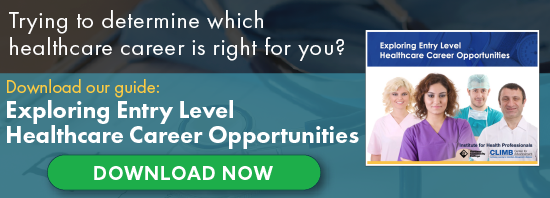 Every 43 seconds, someone in the U.S. experiences a heart attack, many of which can result in fatal cardiac arrest. Considering the fact that the Obama Administration started the Million Hearts initiative five years ago, setting the goal to prevent 1 million strokes and heart attacks by 2017, it's no surprise that late last month, President Obama officially proclaimed February 2016 American Heart Month. He also strongly encouraged people to participate in National Wear Red Day (Feb. 5) to share love and support for those struggling with heart disease.
Every 43 seconds, someone in the U.S. experiences a heart attack, many of which can result in fatal cardiac arrest. Considering the fact that the Obama Administration started the Million Hearts initiative five years ago, setting the goal to prevent 1 million strokes and heart attacks by 2017, it's no surprise that late last month, President Obama officially proclaimed February 2016 American Heart Month. He also strongly encouraged people to participate in National Wear Red Day (Feb. 5) to share love and support for those struggling with heart disease.
This is the 52nd annual presidential declaration that makes February American Heart Month, a tradition started in 1964 by President Lyndon B. Johnson. Thankfully, the number of deaths attributed to cardiovascular disease has improved in the last half-century—from half of all Americans to one third—however, it remains costly, not only in lives but in funds, neither of which should need to be paid for a disease that is as preventable as heart disease. American Heart Month was created as both a memorial to those who have been lost to cardiovascular disease as well as raise awareness of the risks and warning signs while encouraging the necessary health, lifestyle, and medical change needed to end this threat to our wellbeing as a nation.
Because of the dramatic and intense "movie version" of a heart attack, which is rare in real life, people don't understand what the real warning signs and symptoms of heart attack and stroke are. Many people also presume that women rarely or never have a heart attack, but the truth is, women do experience heart attacks. However, men and women experience symptoms a little differently. Be aware of your body, and seek medical attention if you even somewhat suspect heart attack after experiencing any of the following:
- Chest pain or pressure, which may either last for a few minutes or may go away and come back; sometimes experienced as squeezing sensation or feeling full or heavy in the center of your chest.
- Shortness of breath even if you haven't exerted yourself (e.g., walking up stairs), which may occur with or without chest pain or pressure.
- Cold sweat with lightheadedness, nausea, or vomiting.
- Pain or discomfort/pressure in one or both arms, the neck, jaw, stomach, and/or back.
The symptoms of stroke tend to be fairly obvious, mostly because strokes directly affect the brain. The symptoms that might seem the most vague are sudden numbness or weakness, especially in only one side of the body. One recommended test is to ask the person to raise both arms; if they can't hold one arm up (i.e., it drifts downward) there's probably a problem. The obvious symptoms are slurred speech, sudden loss of coordination, and drooping or sudden loss of expression in one half of the face.
It's also important to understand that a heart attack or stroke is not the same as cardiac arrest. Both heart attack and stroke involve the blockage of blood flow to the heart or brain, respectively. Cardiac arrest involves a malfunction that causes the heart to stop beating, leading to non-responsiveness and the cessation of breathing.
Knowing what to watch out for is only half the battle. Some of the contributing risks for heart attack, stroke, and other aspects of cardiovascular disease are inherited, namely family history, age, and gender. However, that doesn't mean there's nothing to be done to help prevent it. American Heart Month is the perfect time to learn about how you can help you and your family stay healthier, especially helping kids make healthy heart habits while they're young, as with the First Lady's Let's Move! Initiative. There's plenty of areas in your life that can help you mitigate the risks of heart disease, including:
- No smoking
- Healthy diet
- Increasing physical activity
- Maintaining healthy weight (especially obesity)
- Avoiding Type 2 Diabetes
- Properly treating Type 1 Diabetes
- Reducing high cholesterol or blood pressure
Remember, it's your life and the lives of the ones you love at stake. It can be all too easy to make excuses, especially if they sound reasonable. You're busy with work or with your family, and healthy foods can seem so expensive. Remember, you don't need to change your life like flipping a light switch. Check out the options at Make the Effort and Healthy Tips. You can always get started with the easy-to-use assessment tool from the American Heart Association, which can also provide an action assessment report to give you a place to start.
Heart disease is something that can affect anyone, no matter their gender or ethnicity. It's time to follow President Obama's lead and take full advantage of the opportunity American Heart Month represents.





